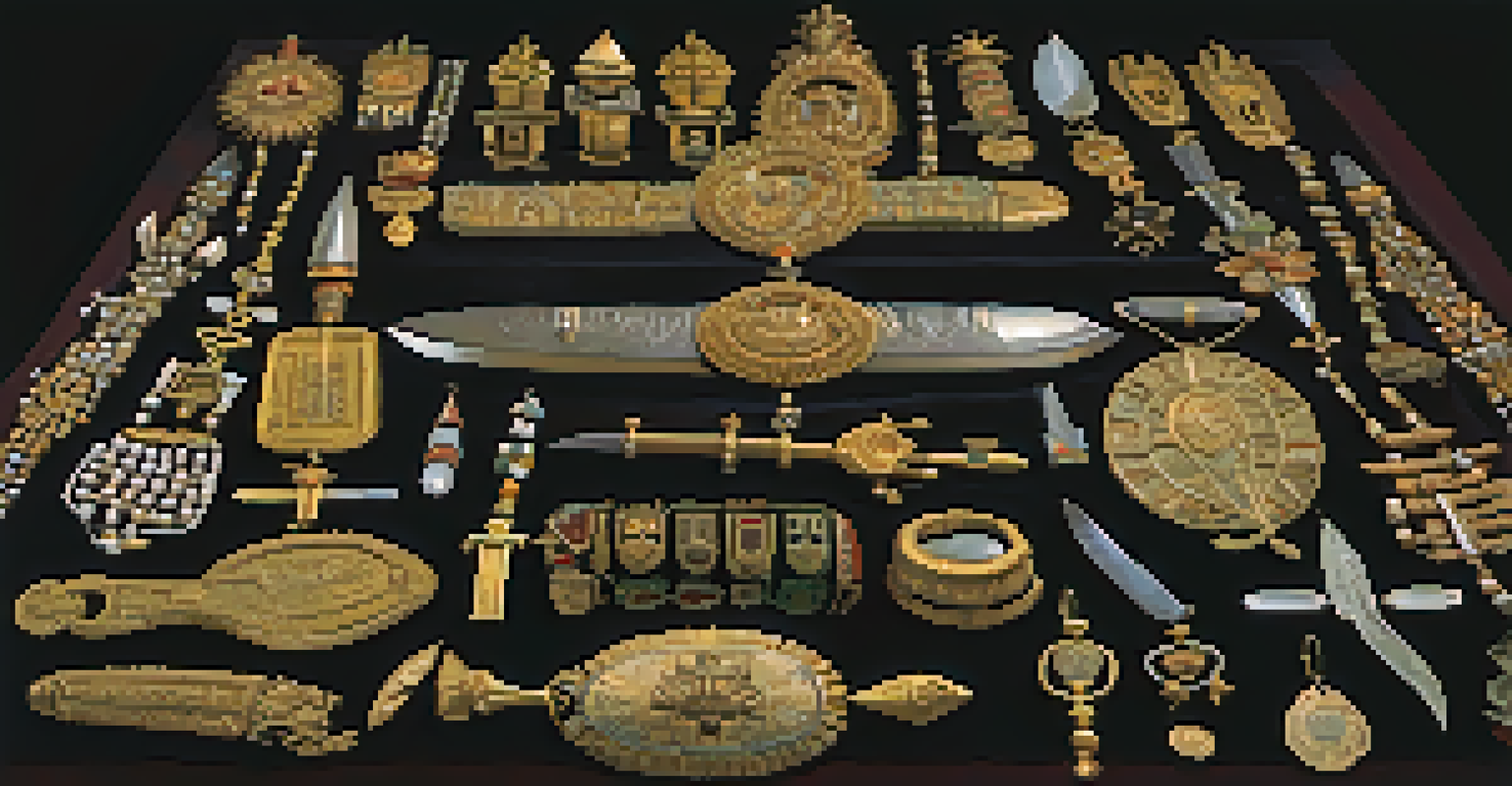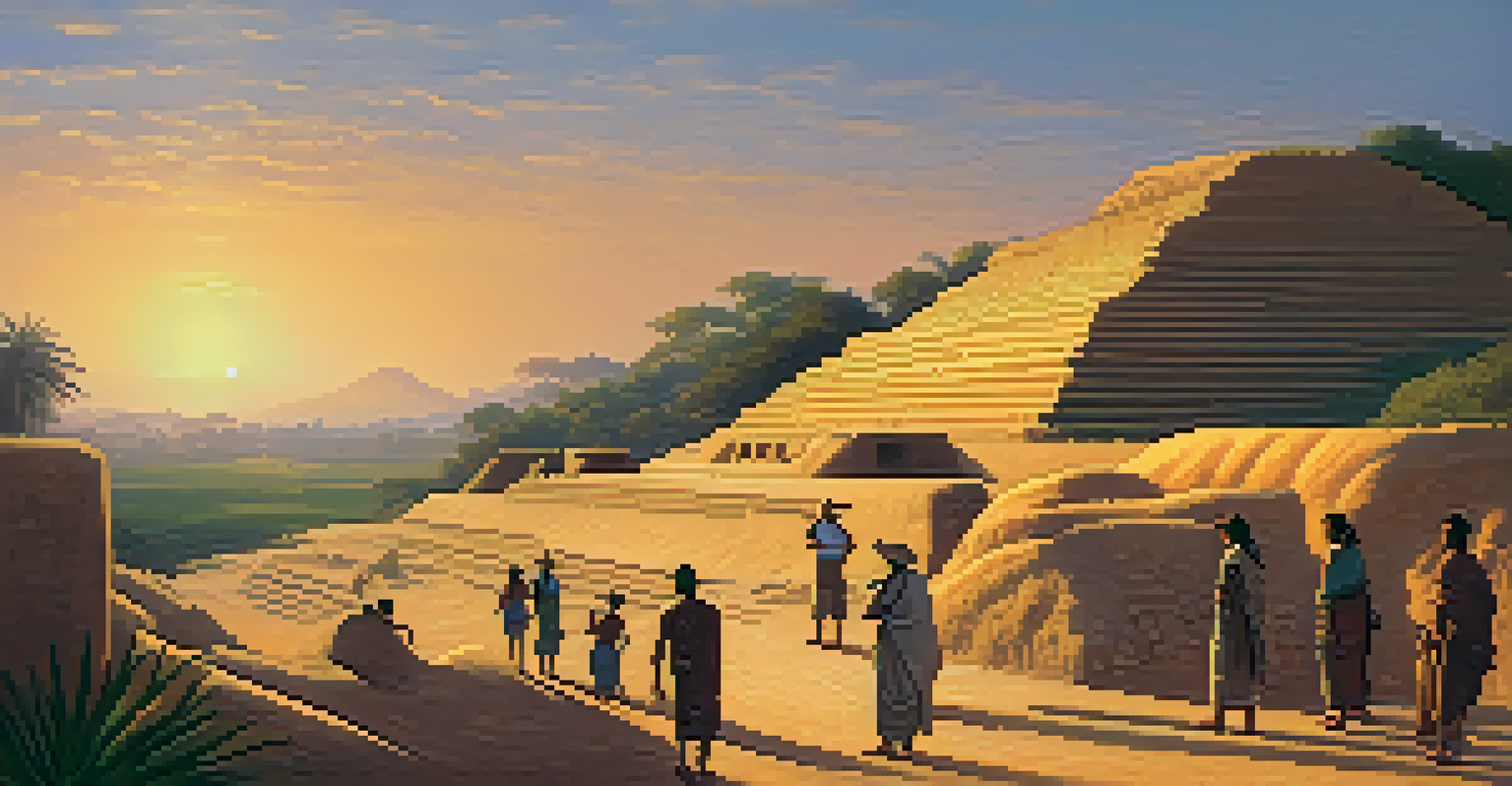Exploring the Mystical Ruins of Sipán: A Tomb of Kings

The Enigmatic Discovery of Sipán
In 1987, a remarkable archaeological find took place in Peru's Lambayeque region. A local farmer stumbled upon a series of ancient tombs while digging for fertilizer, unveiling a royal burial site that would soon captivate the world. This discovery marked the beginning of a new era in our understanding of the Moche civilization, renowned for its rich culture and sophisticated artistry.
The past is never dead. It's not even past.
Excavations led by archaeologist Walter Alva revealed that the Tomb of the Lord of Sipán was not just any grave; it was a magnificent burial site filled with gold, silver, and intricate artifacts. The tomb's layout and the wealth buried alongside the ruler suggested that he was a king of immense power and significance. This find sparked a wave of interest in the rich history of pre-Columbian Peru and the Moche people.
Today, the site of Sipán stands as a testament to the incredible craftsmanship and spiritual beliefs of an ancient civilization. As you explore these ruins, it becomes clear that they were not merely resting places for the dead but rather gateways to the afterlife, imbued with deep cultural meaning.
The Royal Tombs and Their Treasures
The Tomb of the Lord of Sipán is often referred to as the 'Mona Lisa of the Americas' due to the sheer magnificence of its treasures. Inside the tomb, archaeologists discovered an array of objects, including ceremonial knives, beaded jewelry, and ornate headdresses, all crafted from precious metals and materials. Each item tells a story not only of the individual buried there but of a society that valued beauty and craftsmanship.

One of the most striking discoveries was the presence of the lord's attendants, who were buried alongside him to accompany him in the afterlife. These sacrifices highlight the Moche's beliefs about death and the afterlife, showcasing their intricate rituals and the importance placed on the relationships between the living and the deceased. This poignant aspect of the tomb underscores the depth of their cultural practices.
Sipán: A Window to Moche Civilization
The discovery of Sipán has significantly deepened our understanding of the Moche civilization's culture, artistry, and social structures.
Visiting the site of Sipán allows you to witness these artifacts up close, housed in the nearby Tumbas Reales de Sipán Museum. The museum showcases the treasures found in the tombs, offering insight into the artistry and beliefs of the Moche civilization, making it a must-see for anyone intrigued by ancient cultures.
Understanding Moche Culture Through Sipán
The Moche civilization, which thrived from around 100 to 800 AD, was known for its advanced agricultural practices and intricate pottery. Sipán serves as a window into this dynamic culture, reflecting their societal structure and spiritual beliefs. Through the artifacts found in the tombs, we see how the Moche honored their leaders and maintained a strong connection to their deities.
History is not a burden on the memory, but an illumination of the soul.
Art played a crucial role in Moche society, evident in the stunning ceramics and metalwork discovered at Sipán. These pieces often depicted mythological themes and daily life, providing a narrative of the Moche worldview. The craftsmanship of these items reveals not just technical skill but also a rich tapestry of beliefs and stories that were integral to Moche identity.
By exploring Sipán, visitors gain a deeper appreciation of the Moche culture and its contributions to the history of Peru. The site encourages reflection on the legacies left behind, reminding us that even ancient civilizations had complex social structures and were deeply connected to their environment and spirituality.
The Role of Archaeology in Preserving History
Archaeology plays a vital role in uncovering and preserving the stories of ancient civilizations like the Moche. The meticulous work of archaeologists at Sipán not only reveals physical artifacts but also reconstructs the history of a society that thrived long before modern times. Each excavation contributes to a greater understanding of human history and cultural evolution.
Preservation efforts at Sipán are crucial, as they ensure that these invaluable artifacts and their contexts are protected from the ravages of time and tourism. The careful documentation and conservation techniques employed by archaeologists help maintain the integrity of the site for future generations. This ongoing work underscores the importance of archaeological sites as irreplaceable links to our past.
Treasures Reflect Moche Beliefs
The artifacts found in the Tomb of the Lord of Sipán reveal the Moche's intricate rituals and their profound beliefs about death and the afterlife.
Through education and outreach, archaeologists also share their findings with the public, fostering a sense of connection to history. This engagement encourages respect for cultural heritage and highlights the significance of preserving these ancient sites, making them accessible for educational purposes and personal exploration.
Visiting Sipán: A Journey Through Time
Visitors to Sipán are treated to a unique experience that combines history, culture, and natural beauty. The site’s location in the picturesque Lambayeque Valley adds to its allure, making it an ideal spot for those looking to explore Peru's rich heritage. Walking through the ancient ruins, one can almost hear the echoes of the past, feeling the presence of those who once walked these grounds.
The journey to Sipán can be made even more enriching by taking guided tours that provide in-depth knowledge about the site’s history and significance. Knowledgeable guides share fascinating stories about the Moche civilization, illuminating the cultural context behind the artifacts and structures. This personal touch enhances the experience, allowing visitors to connect more deeply with the history of the place.
As you wander the sacred grounds, you'll find that Sipán is more than just a historical site; it's a place of reflection and reverence. The experience invites introspection and appreciation for the ingenuity and artistry of an ancient culture, creating lasting memories for anyone fortunate enough to visit.
Sipán’s Influence on Modern Culture
The impact of Sipán extends beyond archaeology; it has influenced modern Peruvian culture and identity. The treasures and stories unearthed at Sipán have inspired artists, writers, and musicians, reflecting a renewed pride in Peru's pre-Columbian heritage. This cultural renaissance emphasizes the importance of understanding and appreciating the past.
Moreover, Sipán has become a symbol of national pride, reminding Peruvians of their rich history and the remarkable achievements of their ancestors. Festivals and events celebrating Moche culture have emerged, fostering a sense of community and shared heritage. Such initiatives help keep the stories of ancient civilizations alive in the collective memory of the country.
Preserving History Through Archaeology
Archaeology at Sipán plays a crucial role in protecting and sharing the rich history of ancient civilizations, ensuring their legacies continue to inspire future generations.
By engaging with Sipán's legacy, contemporary society acknowledges the complexities of its history and the contributions of the Moche civilization. This connection serves to inspire future generations, fostering a deeper understanding of cultural identity and the importance of preserving historical sites.
Conclusion: The Legacy of Sipán
As we conclude our exploration of the mystical ruins of Sipán, it becomes evident that this site is more than just a collection of ancient tombs. It represents the triumphs, beliefs, and artistry of a civilization that thrived centuries ago. The treasures unearthed here continue to captivate and educate, bridging the gap between past and present.
The legacy of Sipán is a reminder of the importance of cultural heritage and the stories that shape our identities. By preserving and celebrating these ancient sites, we honor the ingenuity of those who came before us and inspire future generations to cherish their own histories. The lessons learned from Sipán resonate today, encouraging a deeper appreciation for the world's diverse cultures.

In visiting Sipán, we not only step into a world of kings and rituals but also engage with the very essence of what it means to be human. The ruins stand as a testament to our shared history, inviting all who come to reflect on the journey of civilizations and the enduring spirit of discovery.